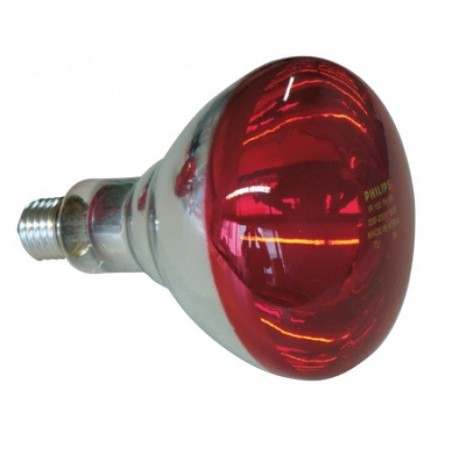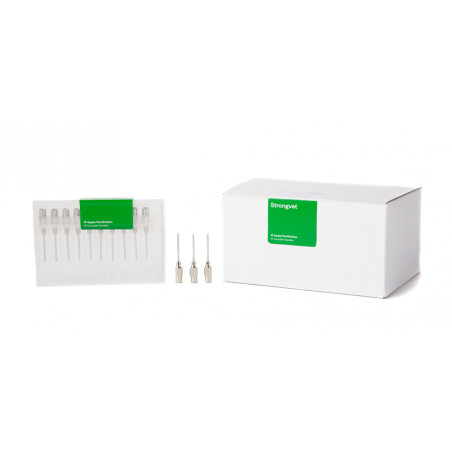In the two previous articles, we have talked with three veterinarians (Lali Coma, Patricia Prieto and Josep Bragulat), about how the nurseries are going on nowadays, after the changes in the use of antibiotics and the increase in production caused by the increase on prolificacy.
If in the first article the approach was more generic, and in the second one we focused on digestive problems, in this third article we want to talk about another usual guest in the nurseries: Streptococcus suis, the causative agent of clinical pictures that can include meningitis, arthritis and sudden death.

Regarding its control without antibiotics, the three authors agree that we are some steps behind compared with other health problems such as, for example the diarrhoea caused by E. coli.
Amoxycillin, the antibiotic of choice for treating streptococcal meningitis, is still very used, whether as a medicated premix in the feed or as a water-soluble product.
Which are the bases for the control of Streptococcus suis with a lower use of antibiotics?
In Table 1 we summarise the different groups of measures that can be taken to fight . streptococcal disease. We have asked the three veterinarians to tell us which are the most important ones for them.
Table 1. Importance of the different measures for the control of Streptococcus suis in the nurseries according to the authors. There are some subtle differences, but we can come to the conclusion that for them, the three main measures are: a good environment and an appropriate ventilation in the nurseries, reducing the density, and keeping high hygiene standards in everything involved with the handling of the piglets in the farrowing rooms.
| Bragulat | Coma | Prieto | |
|---|---|---|---|
| Preventative treatments based on acids | 5 | 6 | 6 |
| Cleaning of the sows before farrowing | 3 | 5 | 4 |
| Hygiene protocols in the farrowing rooms | 4 | 1 | 1 |
| Correct environment in the nurseries | 2 | 3 | 3 |
| Decrease in density in the nurseries | 1 | 2 | 2 |
| Use of autovacccines | n.a. | 4 | 5 |
n.a.: not assessed
Coma emphasises that “the main work must be done in the farrowing rooms. Many of the handling/management protocols used up to now must be reconsidered.”
“The work for the control of Streptococcal infections must be started in the farrowing room. When we started to work with hyperprolific sows, many cross fostering of piglets between dams were carried out, and many nurse sows were used.
Now we work hard to improve the sow's lactation. The new feeding systems, like the feeding ball, or the individualised automatic feeding systems allow to reach a high lactation feed consumption and, therefore, a high milk production. The more milk produced, the more piglets a sow can rear, and therefore a minimisation of the need for nurse sows. Minimizing the number of cross fostered piglets is a first step for control.”
“The use of electric or gas tail dockers that cauterise the wound, the change of needles at least between litters. In some problematic farms, disposable needles are being used and changed between each animal.”
Other measures that cannot be omitted are the weaning age. “We must avoid, at all costs, weaning young piglets that are only 17 or 18 days old; and the management of piglets with a low weaning weight (<4.5kg) is also very important. The piglets with a low weight at weaning are a problem, but leaving them for longer in the farrowing house is not the solution: we must use preweaning rooms or pens.”

The use of preweaning units or pens for piglets with low weight allows: 1. To wean them applying an appropriate management for it. 2. More weight homogeneity in the nurseries. 3. Keep an appropriate all-in/all-out management system in the farrowing rooms.
Regarding density, Prieto considers that it is one of the aspects to improve on many farms: “Many farms have increased their production by 2-3 more piglets per sow and year, but they still have the same housing area in the nurseries than with the older production figures. It is unthinkable to improve, from the health point of view, with this scenario. We ask for, at least, 0.22 m2/piglet until they reach 18-20 kg.”

Bragulat insists: “The equation scarce ventilation + high density always gives place to meningitis problems (…) In winter, on too many farms with an inadequate heating, it is expected to reach the optimal temperature for the piglets by hardly ventilating, and this is, clearly, a mistake. Sometimes, especially if we start with a good quality weaned piglet, it is preferable to have a slightly lower temperature in the nursery in exchange for a cleaner environment.”
In the case of Streptococcus suis, autovaccines are a relatively unexplored tool yet. Prieto has some experience, but the results are preliminary yet. “Obviously, the autovaccine requires the carrying out of a bacteriological isolation to confirm that Streptococcus suis is the causative agent. In our case, we perform a blanket vaccination and revaccination of all the sows, and we later administer the vaccine in each cycle.”
Coma has some good experiences with the control of meningitis with an autovaccine when this problem appears during the lactation, but not so good as to avoid problems in the nursery stage.
It seems clear that the strategies for the control of Streptococcus suis imply different management measures in the farrowing room and the nurseries, all of them aimed at reducing the transmission from the dam to her litter and to improve the environmental conditions and the density in the nurseries.






